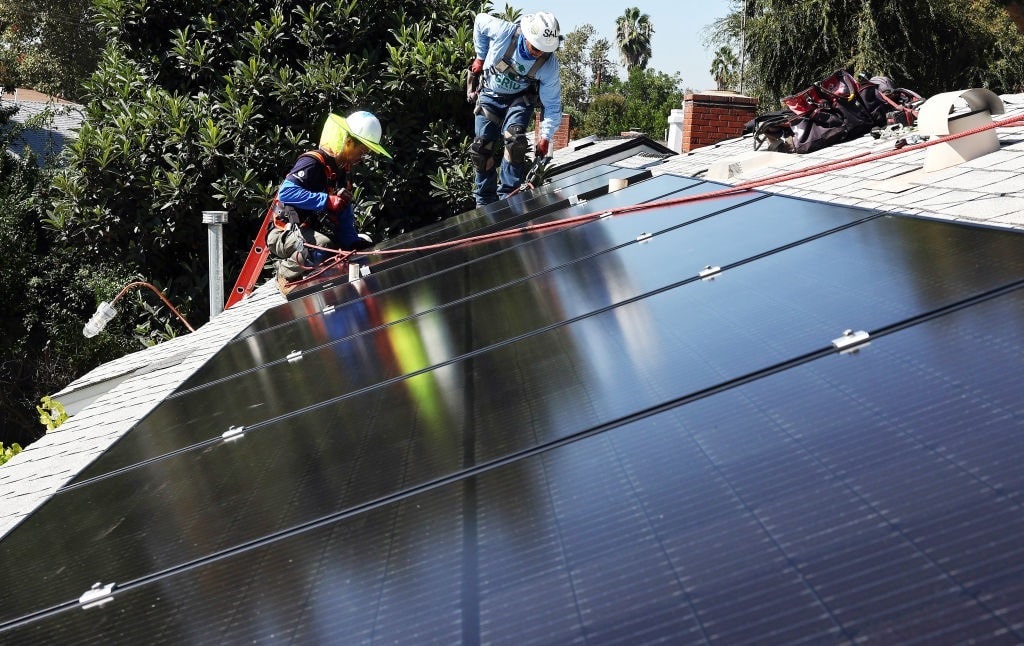In a recent interview with Joe Rogan, Elon Musk claimed the United States could be supplied with electricity by a 10,000-square-mile solar array. Mr. Rogan did not critically press the iconic X-owner as to the logistical or environmental problems such an installation would present. Mr. Musk is undoubtedly a scientific genius, but even geniuses are susceptible to conflicts of interest – like owning a massive company that manufactures and sells solar panels in America while extolling their salvific benefits.
It is clear what a 10,000-square-mile solar field would do for the bottom line of a company like Tesla (which acquired SolarCity, a leading manufacturer of residential and commercial solar panels, in 2016). But what would it do for America, or the ecosystem supposedly being rescued from destruction?
A Panoply of Panel Problems
Solar panels have steadily improved in efficiency since their introduction. Early efforts were about 6% efficient in capturing the sun’s fusion energy. Some prototypes now extend into the potential range of 35% or greater: Elon Musk makes panels that approach 20-23% efficiency. At 13-14% efficiency, it has been estimated that an array of 22,000 square miles would be required to energize America, an area roughly the size of Lake Michigan. Musk’s upgrade using “next generation” panels would reduce the required space by more than half, to an area akin to Lake Erie.

(Photo by Mario Tama/Getty Images)
Depending on panel efficiency, estimates of the number of solar panels this installation would require vary, but range between ten billion and 18.5 billion panels. When asked by Rogan whether it was feasible to install such an array, Musk was enthusiastically optimistic.
“Absolutely,” Musk responded. “We need batteries, but yes.” Musk explained that “it’s not hard” and “very feasible” to power the entire country with solar because the sun is converting more than four million tons of mass to energy every second and requires no maintenance. “That thing just works. We have a giant fusion reactor in the sky,” he said.
It could be that Elon has been staring at the sun too long, developing a blind spot. He concedes there is a battery problem to solve – a huge hurdle not easily surmounted. Unmentioned are grid carrying capacity, inefficiencies of transmission, or the ongoing problem of intermittency: When clouds scud across the sky, the energy flow from panel to grid fluctuates erratically. But the more immediate (and consistently sidestepped) inquiry is: How much energy and pollution would ten billion solar panels require to manufacture, install, and eventually dispose of? Solar panels deteriorate in efficiency by about .5% annually and thus last about 25-30 years before their (toxic, non-recyclable) disposal is required.
Elon Musk and Silicon
Elon Musk’s battery limitation acknowledgement is much akin to the Utopian social justice statement: “Every human on the planet can have their own personal Taj Mahal. We need the marble and jewels, yes. But let us not quibble.” A similar sleight of hand ignores the energy and pollution costs of manufacturing billions of panels. Musk’s Tesla (SolarCity) panels are a hybrid of crystalline and silicon models. Silicon requires fossil fuels to create, according to Thomas Troszak, director of research and development at Reciprodyne, a company specializing in custom machine and process design, fabrication, and consulting. In “Why do we burn coal and trees to make solar panels?” Troszak explains:
“… every step in the production of solar PV [photovoltaic (converting the sun’s energy to electricity)] power systems requires an input of fossil fuels – as the carbon reductants needed for smelting silicon from ore, to provide manufacturing process heat and power, for the intercontinental transport of materials, and for on-site deployment. The only “renewable” materials consumed in PV production are obtained by deforestation – by burning large areas of tropical rainforest for charcoal (another carbon reductant) and to provide the wood chips that are necessary for all silicon smelters to function. Additional mineral resources and fossil energy are needed for constructing factories, process equipment, and maintaining the PV manufacturing infrastructure itself. Silicon smelters, polysilicon refineries, and crystal growers all require uninterrupted, 24/7 power that comes mostly from coal and uranium.”
Calculating the greenhouse gas (GHG) and carcinogen tally of the manufacture of 10-20 billion panels was not part of Musk’s Rogan experience. Arguably the world should await even more efficient “next generation” panels – or perhaps the lagging battery materials and technology – before ramping up these installations, but “climate urgency” means pollution and waste are just a cost of saving the planet from pollution and waste.
Climate ideologues crow that America has reduced its GHG production, ignoring increases abroad attributable to “renewable” manufacturing. As China faces an environmental crisis disposing of its aging panels while manufacturing new ones, the better course may be to simply leave the things unmade rather than have to clean up the toxic disaster they have clearly become.
Saving the World?
Or ideologues and captains of industry could pitch a worldwide solar array before batteries or grids exist to capture the juice, and with no proposal to replace or dispose of them when they expire in a few decades. This would require an estimated 92.7 billion solar panels, enough to completely cover America’s 11 smallest states (South Carolina, West Virginia, Maryland, Connecticut, New Hampshire, Vermont, Delaware, New Jersey, Massachusetts, Hawaii and Rhode Island) plus another 4,000 square miles!
There would be far less chemical pollution generated for the planet if every human were provided with a personal Taj Mahal. But hey, who’s counting? Just build toxic solar panels in China, NIMBY-style.
When it comes to making money, Elon Musk is the prophet of profits. It is to be hoped this oddball genius can calculate not only rocket propulsion but the true environmental costs of his technological visions.

